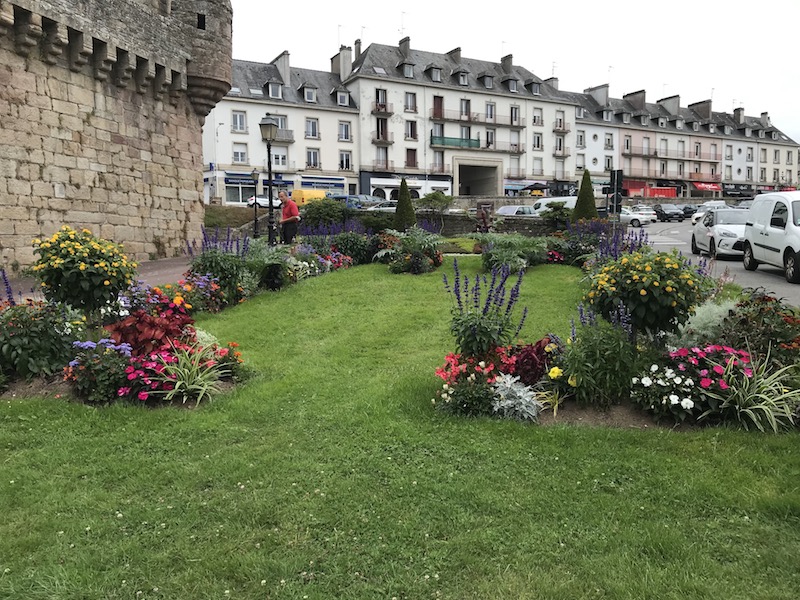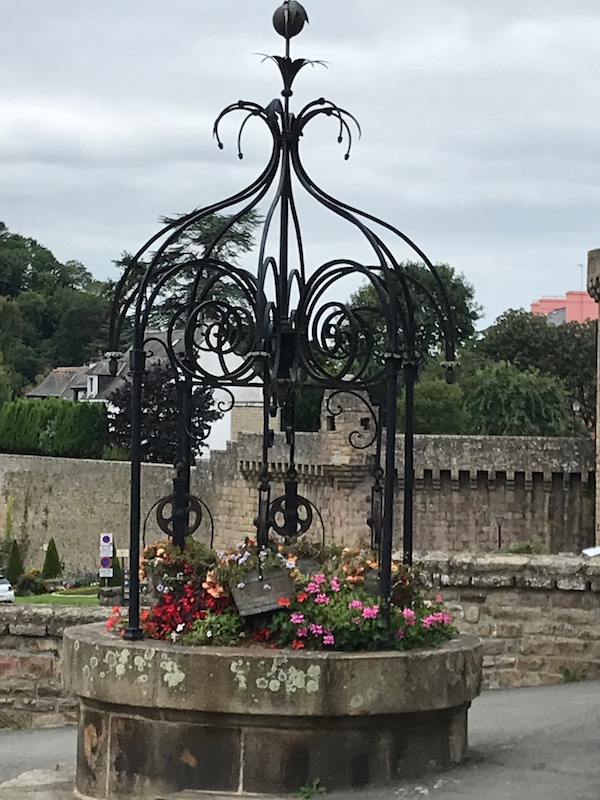Our Blog - Bretagne Trip - Summer 2021 - Hennebont, France
Hennebont isn't one of our normal little villages, as it has over 15,000 people. It straddles the Blavet river and is located at the bottom of an estuary, so it is the limit between the maritime part of the Blavet and the river part of the Blavet. The river joins up with the ocean about 15 kilometers downstream.
The name comes from "Hen" meaning old and "bont" meaning bridge. In fact, the first bridge was built to cross the river here in 1114 and that is how the name started. But even before this, there were people in this area back in the Neolithic period, determined from the light polished axes that have been discovered here.
From the 5th century, people who were driven out of Britain by the Saxons began settling on the coast of Brittany. Starting in around 1200, a feudal motte was created (called the Old Town) on the right bank of the river. It was a strategic position that allowed them to control passage on the river. That lasted until the middle of the 13th century when the Duke of Brittany, Jean Le Roux, dismantled the feudal motte and started construction of a castle with walled fortifications. This new Ville-Close, or enclosed town, was created on the opposite side of the river. It was quite strong and withstood several sieges.
Here we can see what is left of the fortifications. There is one side wall, part of the back wall, and the Bro-Erec'h towers. By the end of the 16th century, the ramparts had lost their defensive role and the village began to grow outside of the walls. These large twin towers served as a prison between 1644 and 1910 when they were restored and turned into a museum.


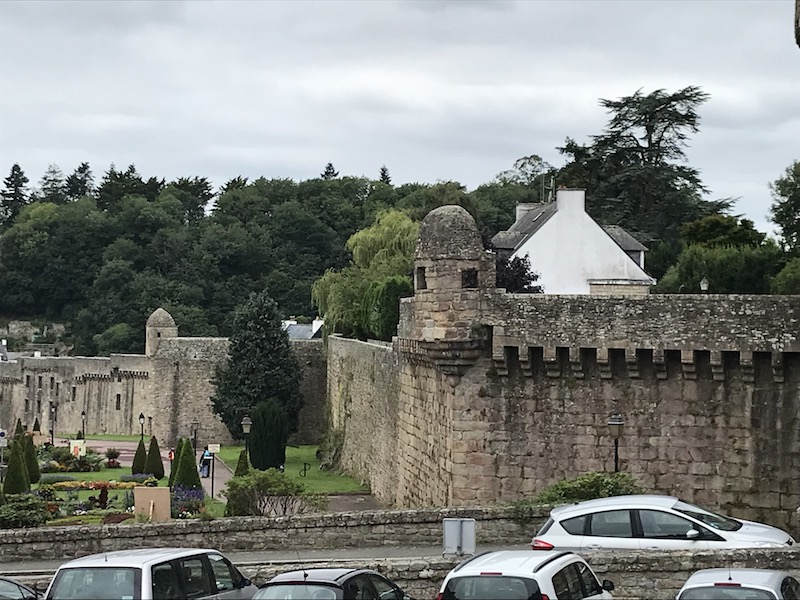
Lucy didn't seem that interested in this Ville-Close ... maybe she had a feeling that it wasn't going to be *that* interesting?

We headed up the stairs and walked around the one section of the wall that remains and got a few nice pictures from there. Tom even stopped to check out one of the watchtowers.
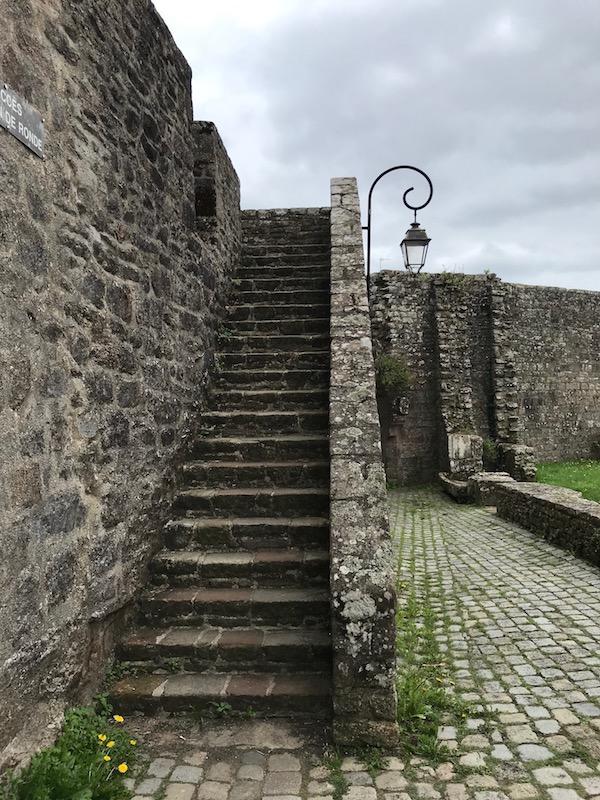
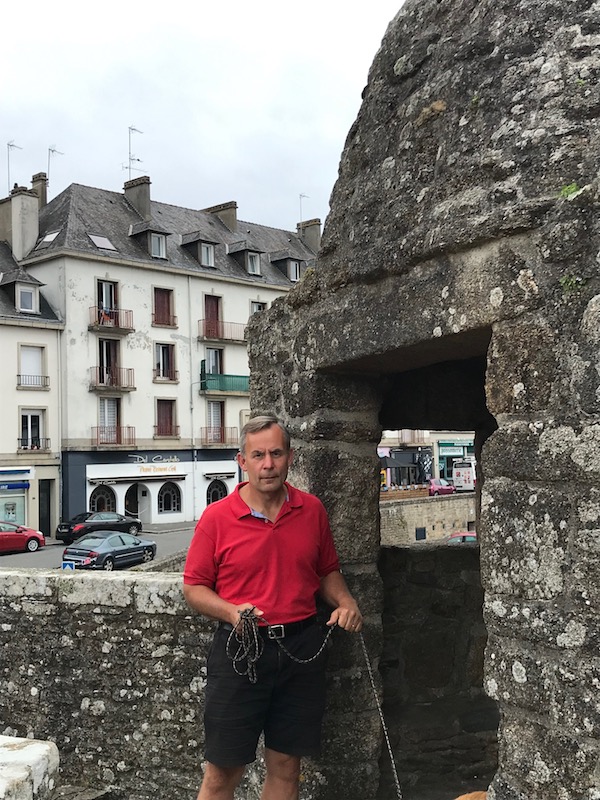

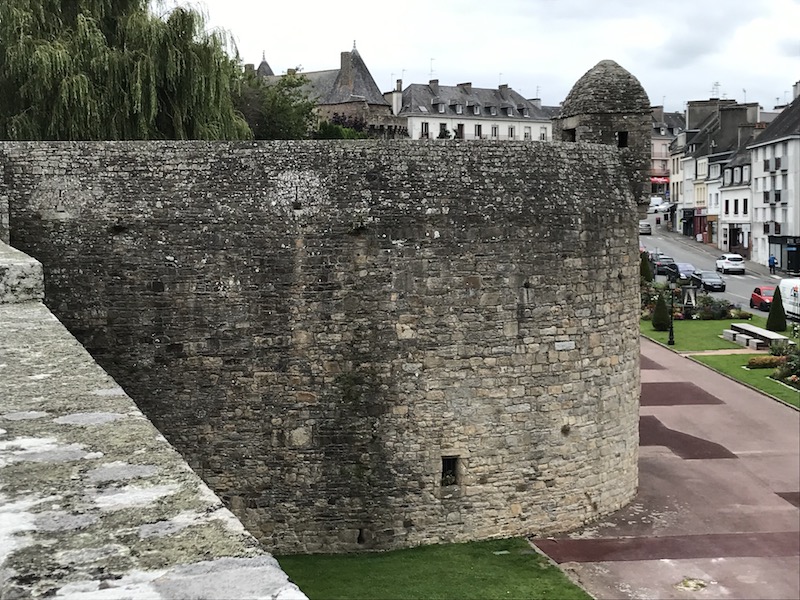
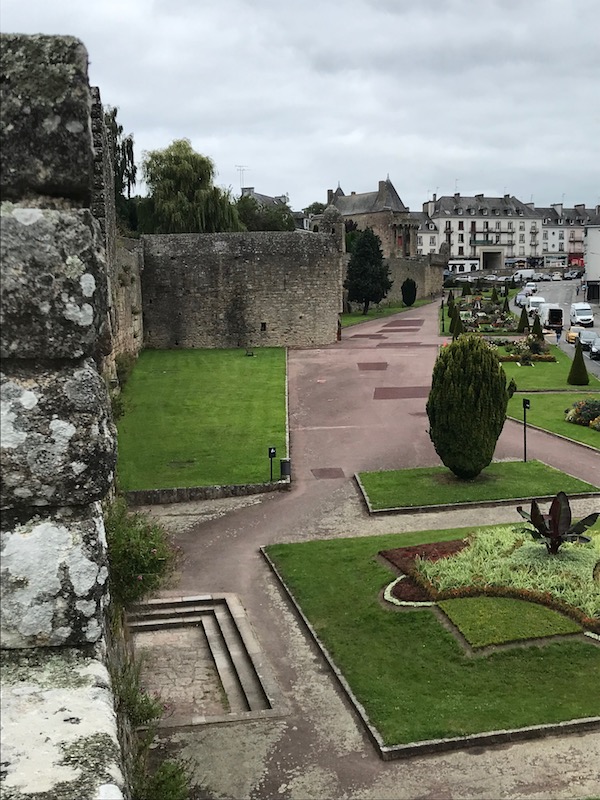
The town didn't fare well during WWII. On August 7th, 1944, as the French and American troops were entering the town, the German forces fought back. They blew up bridges and bombed the town, destroying 2/3 of the town. Due to this bombing, there are very few old houses left. We happened to walk by this one, which has a stone foundation and then is half-timbered on the top. You can't tell it from the picture, but the ground floor on the 2nd picture is bowed outward quite a bit ... I'm surprised it is still standing!

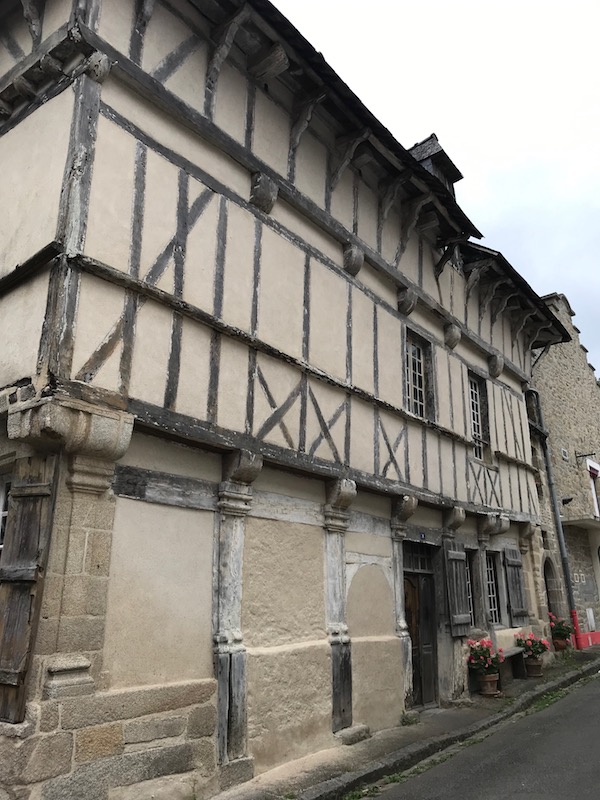
The Notre-Dame-du-Paradis basilica was built between 1514 and 1530 in a flamboyant Gothic style. It has a different style than many of the churches we've been in, as this one has a VERY tall spire and is fairly narrow. You can see the detailed decoration around the doors of the main entrance and the interesting gargoyles. From the side, you can see how there are no flying buttresses here, and the exterior walls are actually fairly low. I thought the detail on the turrets of the spire was quite interesting.
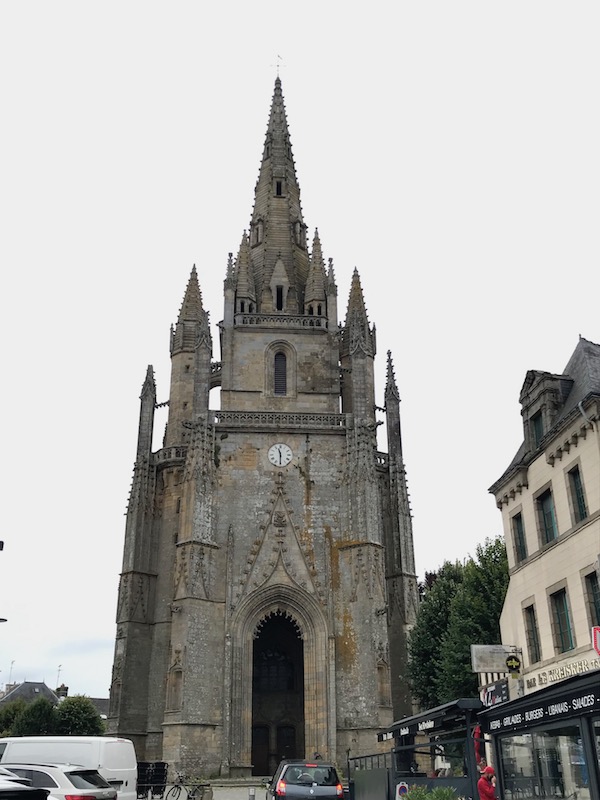
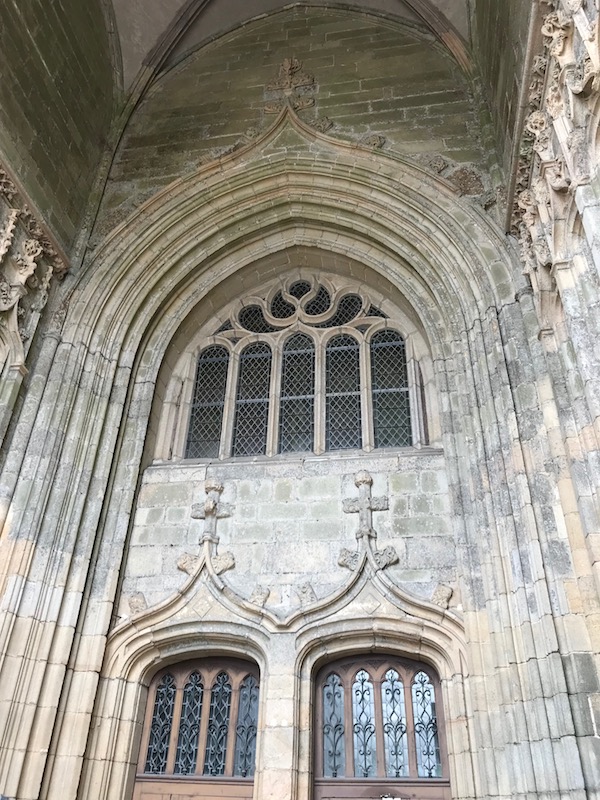

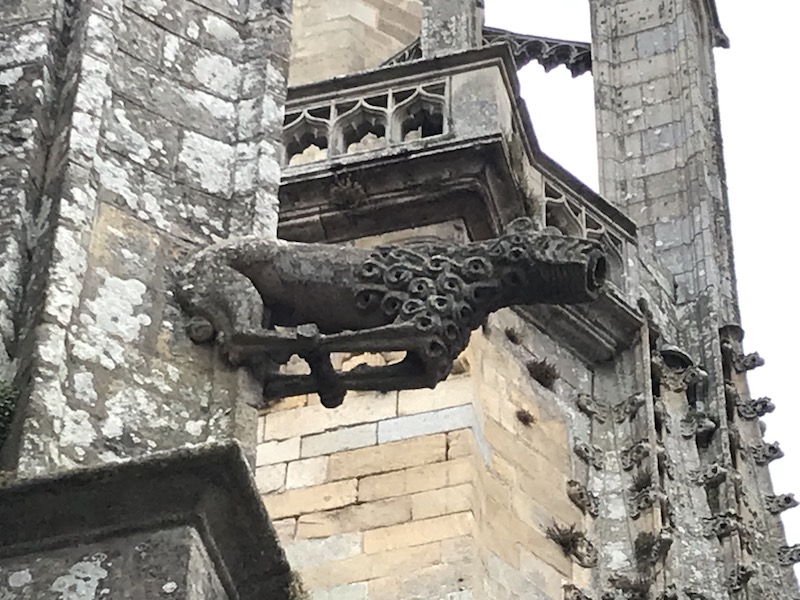
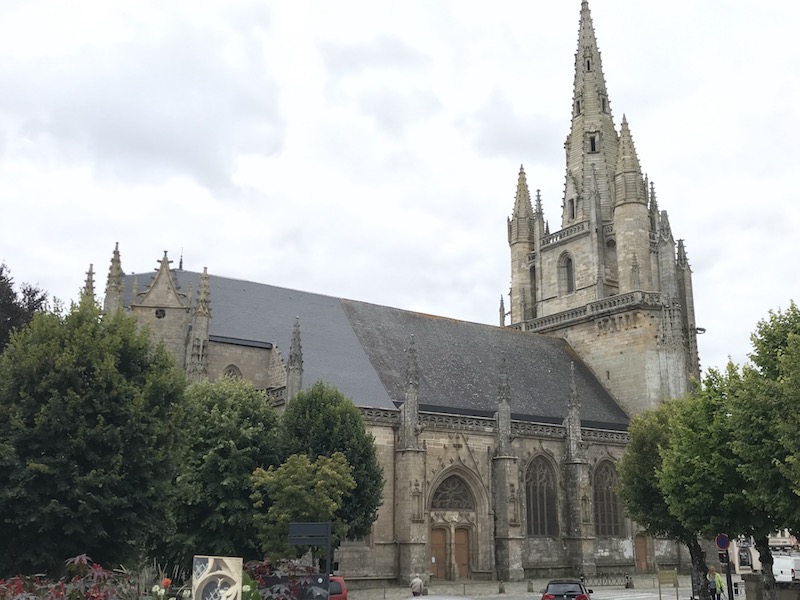
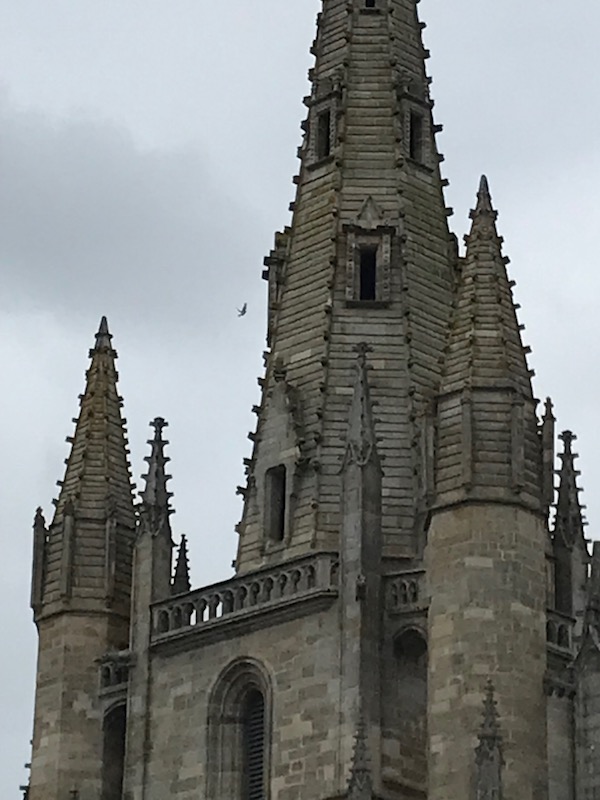
They seem to be doing some work on the inside, as they had a net hanging below the ceiling in the nave. The choir looked to have been recently painted and was bright and white, while the nave was still the original grey stone. You can clearly make out the pointy Gothic arches and the ribbed vaults in the ceiling of the choir. They also had several very nice wooden statues and what looked to be a few very old funerary coffin covers.
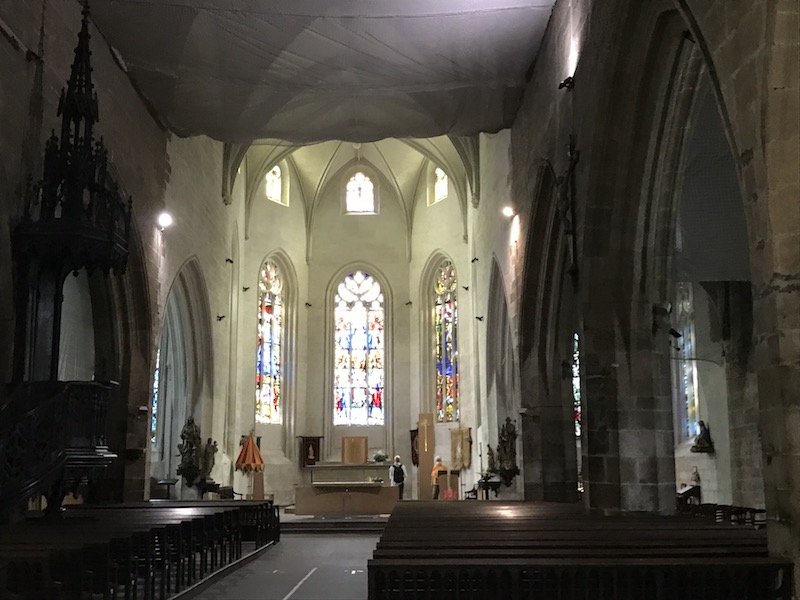

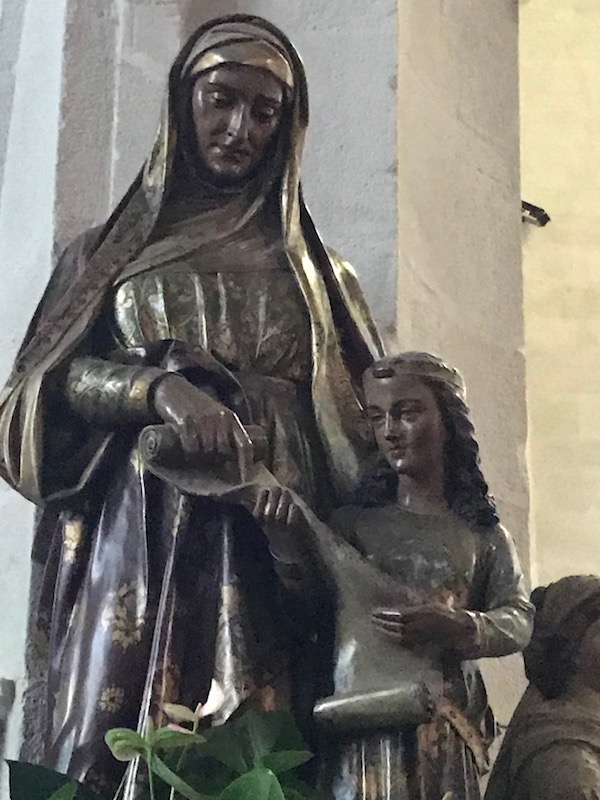

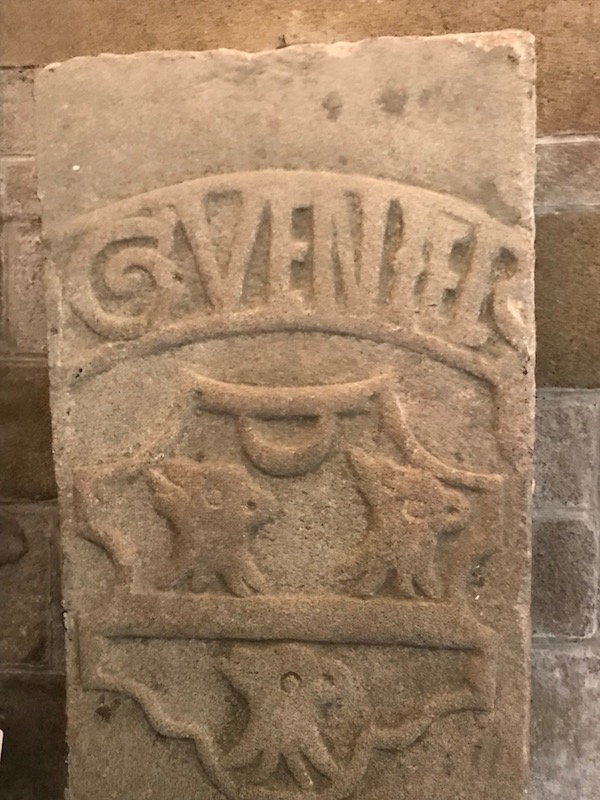
While the church only had minor damage during the bombings of 1944, the original windows were all destroyed. The new windows were replaced with basically replicas of the old ones, although they do seem to have a semi-modern characteristic to them. The larger windows in the nave show important events for the town. I didn't get pictures of all of them, but here are a few that I liked.
The founding of the "La Joie Notre Dame" abbey in the 1273. Cistercian monks occupied the abbey until October 1792. There is now a national horse stud-farm located there (we didn't go see it).
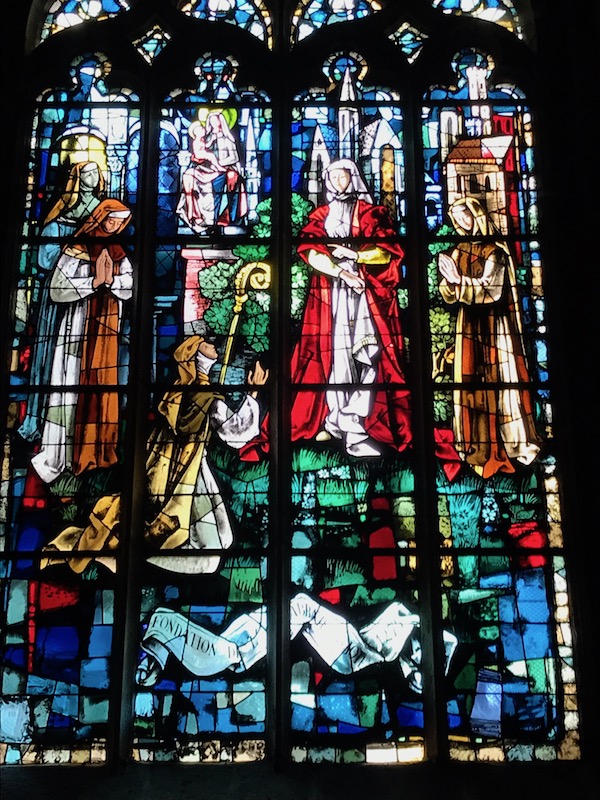
Here we see François Michard, a pious man and a blacksmith by trade. In 1507, Anne Queen of France and Duchess of Brittany stopped to pray at Hennebot on her way to the basilica of Folgoët. Following the visit, François decided to build a chapel. Here we see him at work on the construction site of the chapel in the year 1514. Unfortunately, he died in 1527 and did not see the end of the construction, which was finished in 1530.
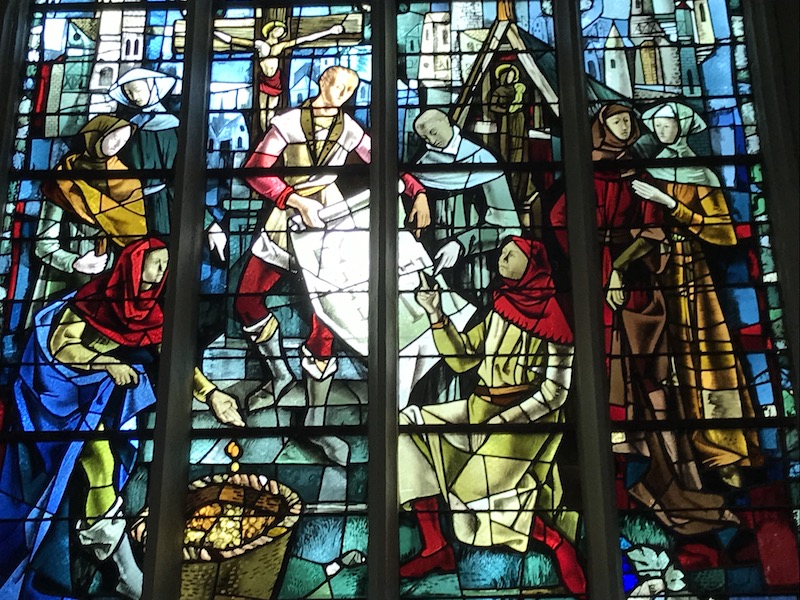
This last one shows "Joan the Flame", who has an interesting story relating to the town. During the war of succession of the Duchy of Brittany, there were two main contenders: Charles de Blois and Jean de Monfort. Charles de Blois besieges the city walls, thinking it will be an easy victory since Jean de Monfort was a prisoner of the French. Unfortunately for them, his wife, Jeanne of Flanders, organized the resistance and took refuge behind the walls of Hennebont. They were able to hold off the army of Charles de Blois until the English fleet came to their aid. During this siege, Joan of Flanders won her nickname "Joan the Flame" for her fearlessness in combat.
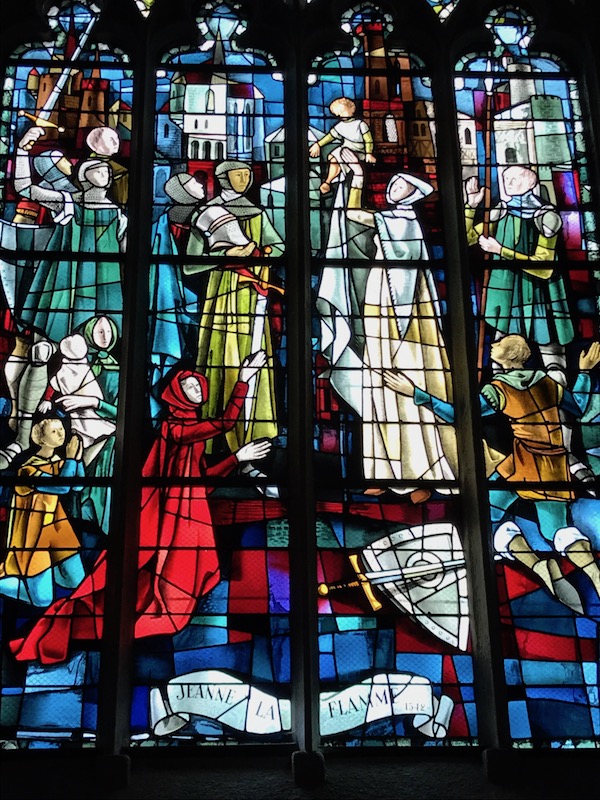
In France, they have a designation as a "village in bloom". It is an annual competition that started in 1959, and all French communes can take part. The label as a village in bloom (Village Fleuri) has 1, 2, 3, or 4 "flowers", based on the aesthetics of green spaces and floral displays. This was a really well-tended little green space with flowers, just outside of the old ramparts, as well as flowers planted inside an ancient well.
